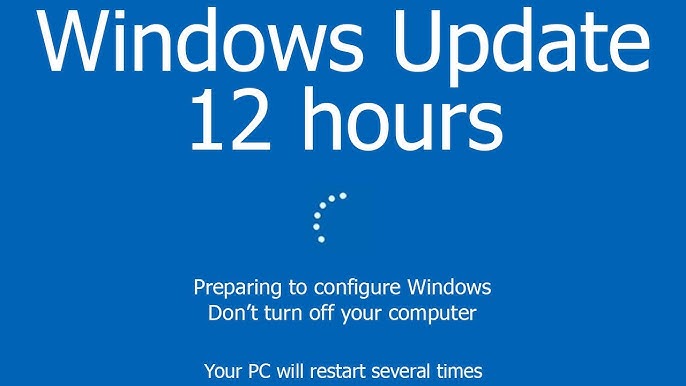In today’s digital age, desktop software plays a pivotal role in both personal and professional spheres. Desktop webdevelopmentpros.co software refers to applications or programs that are installed and run on a computer’s desktop or laptop. These software solutions offer a wide range of functionalities, catering to various needs and preferences.
Types of Desktop Software
Productivity Software
Productivity software encompasses tools designed to enhance efficiency and streamline tasks. Examples include word processors, spreadsheets, and presentation software like Microsoft Office Suite.
Multimedia Software
Multimedia software enables users to create, edit, and manage various forms of media such as images, audio, and video. Adobe Creative Cloud is a prime example, offering powerful tools for graphic design, video editing, and more.
Utility Software
Utility software consists of programs that perform specific tasks to optimize system performance or provide additional functionality. Examples include antivirus software, disk cleanup utilities, and file compression tools.
Educational Software
Educational software is specifically designed to facilitate learning and skill development. It ranges from interactive tutorials to simulation programs used in classrooms and training environments.
Gaming Software
Gaming software encompasses a vast array of video games designed for entertainment purposes. From casual games to high-end AAA titles, desktop gaming software caters to gamers of all preferences and skill levels.
Advantages of Desktop Software
Desktop software offers several advantages over web-based applications:
Offline Accessibility
One of the key benefits of desktop software is its ability to function without an internet connection. Users can access and use the software anytime, anywhere, even in areas with limited or no internet access.
Enhanced Performance
Desktop software often delivers superior performance compared to web applications, as it utilizes the computer’s resources more efficiently. This results in faster response times and smoother user experience, especially when dealing with resource-intensive tasks.
Customization Options
Desktop software typically offers more customization options, allowing users to tailor the software to their specific needs and preferences. From interface themes to keyboard shortcuts, users have greater control over their user experience.
Security and Privacy
Desktop software offers enhanced security and privacy compared to web applications, as data is stored locally on the user’s device. This reduces the risk of data breaches and unauthorized access, providing users with greater peace of mind.
Cost-effectiveness
While some desktop software may require a one-time purchase or subscription fee, many options are available for free or at a lower cost compared to web-based alternatives. This makes desktop software a cost-effective solution for individuals and businesses alike.
Popular Desktop Software Applications
Microsoft Office Suite
Microsoft Office Suite is a comprehensive collection of productivity tools, including Word, Excel, PowerPoint, and Outlook. It is widely used in both personal and professional settings for document creation, data analysis, presentations, and email management.
Adobe Creative Cloud
Adobe Creative Cloud is a subscription-based service that provides access to a wide range of multimedia tools, including Photoshop, Illustrator, Premiere Pro, and After Effects. It is favored by graphic designers, photographers, videographers, and other creative professionals for its advanced features and versatility.
AutoCAD
AutoCAD is a leading software solution for computer-aided design (CAD) and drafting. It is widely used by architects, engineers, and construction professionals to create precise 2D and 3D drawings, models, and blueprints.
VLC Media Player
VLC Media Player is a versatile multimedia player that supports a wide range of audio and video formats. It is known for its simplicity, reliability, and compatibility, making it a popular choice for playing media files on desktop computers.
Steam
Steam is a digital distribution platform for video games, offering a vast library of games for purchase and download. It also provides social features, multiplayer functionality, and automatic updates, making it a central hub for PC gaming enthusiasts.
Choosing the Right Desktop Software
When selecting desktop software, it’s essential to consider the following factors:
Compatibility
Ensure that the software is compatible with your operating system and hardware specifications to avoid compatibility issues and performance issues.
User Interface
Choose software with an intuitive and user-friendly interface that facilitates easy navigation and efficient workflow.
Features and Functionality
Evaluate the features and functionality offered by the software to ensure it meets your specific requirements and objectives.
Reviews and Ratings
Research user reviews and ratings to gauge the software’s reputation, reliability, and performance before making a decision.
Installation and Updates
Installation Process
Most desktop software applications offer straightforward installation processes, typically involving downloading an installer file from the developer’s website and following on-screen instructions.
Importance of Regular Updates
Regular updates are crucial for maintaining the security, stability, and performance of desktop software. Be sure to enable automatic updates or regularly check for updates manually to ensure you’re running the latest version of the software.
Desktop Software vs. Web Applications
Pros and Cons of Desktop Software
- Pros: Offline accessibility, enhanced performance, customization options.
- Cons: Limited accessibility, potential compatibility issues, need for regular updates.
Pros and Cons of Web Applications
- Pros: Accessibility from any device with internet access, automatic updates, scalability.
- Cons: Dependency on internet connection, potential security risks, limited offline functionality.
Choosing Between the Two
The choice between desktop software and web applications depends on factors such as user preferences, specific requirements, and operational needs. Consider the advantages and disadvantages of each option to make an informed decision.
Future Trends in Desktop Software
As technology continues to evolve, several trends are shaping the future of desktop software:
Cloud Integration
Desktop software is increasingly integrating cloud-based functionalities, allowing users to access their data and settings from anywhere with an internet connection.
Artificial Intelligence
Artificial intelligence (AI) is being integrated into desktop software to enhance automation, personalization, and predictive analytics, improving user experience and efficiency.
Virtual Reality and Augmented Reality
Desktop software is exploring the realms of virtual reality (VR) and augmented reality (AR) to create immersive and interactive experiences for users, particularly in gaming, design, and simulation applications.



